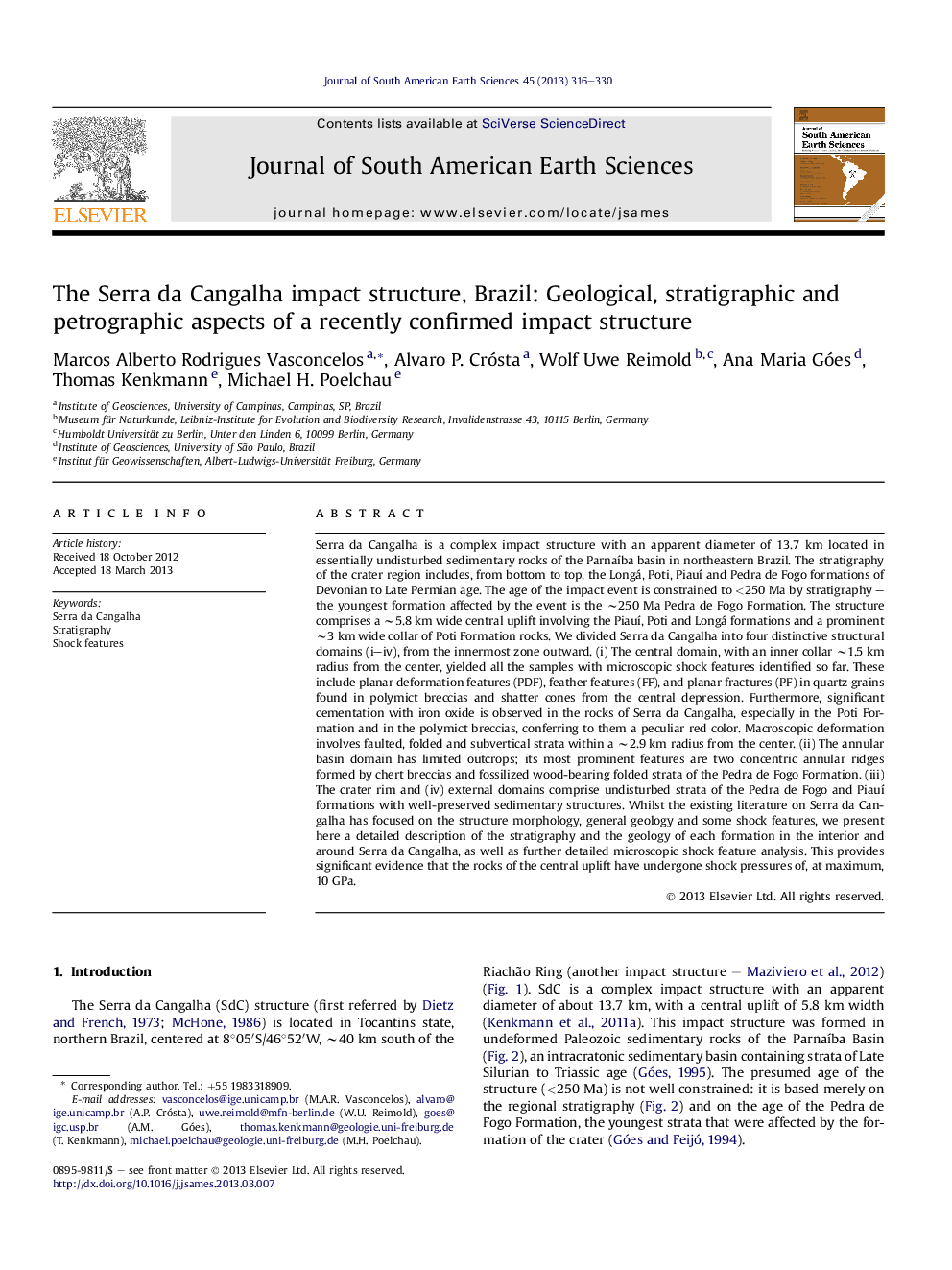| Article ID | Journal | Published Year | Pages | File Type |
|---|---|---|---|---|
| 4682350 | Journal of South American Earth Sciences | 2013 | 15 Pages |
•We have mapped the Serra da Cangalha impact crater.•We have analyzed the micro-deformation shock features of shatter cones and breccias.•We increased the information about stratigraphy and petrography of SdC.•We have measured more PDF sets and identified more additional shock features.
Serra da Cangalha is a complex impact structure with an apparent diameter of 13.7 km located in essentially undisturbed sedimentary rocks of the Parnaíba basin in northeastern Brazil. The stratigraphy of the crater region includes, from bottom to top, the Longá, Poti, Piauí and Pedra de Fogo formations of Devonian to Late Permian age. The age of the impact event is constrained to <250 Ma by stratigraphy – the youngest formation affected by the event is the ∼250 Ma Pedra de Fogo Formation. The structure comprises a ∼5.8 km wide central uplift involving the Piauí, Poti and Longá formations and a prominent ∼3 km wide collar of Poti Formation rocks. We divided Serra da Cangalha into four distinctive structural domains (i–iv), from the innermost zone outward. (i) The central domain, with an inner collar ∼1.5 km radius from the center, yielded all the samples with microscopic shock features identified so far. These include planar deformation features (PDF), feather features (FF), and planar fractures (PF) in quartz grains found in polymict breccias and shatter cones from the central depression. Furthermore, significant cementation with iron oxide is observed in the rocks of Serra da Cangalha, especially in the Poti Formation and in the polymict breccias, conferring to them a peculiar red color. Macroscopic deformation involves faulted, folded and subvertical strata within a ∼2.9 km radius from the center. (ii) The annular basin domain has limited outcrops; its most prominent features are two concentric annular ridges formed by chert breccias and fossilized wood-bearing folded strata of the Pedra de Fogo Formation. (iii) The crater rim and (iv) external domains comprise undisturbed strata of the Pedra de Fogo and Piauí formations with well-preserved sedimentary structures. Whilst the existing literature on Serra da Cangalha has focused on the structure morphology, general geology and some shock features, we present here a detailed description of the stratigraphy and the geology of each formation in the interior and around Serra da Cangalha, as well as further detailed microscopic shock feature analysis. This provides significant evidence that the rocks of the central uplift have undergone shock pressures of, at maximum, 10 GPa.
